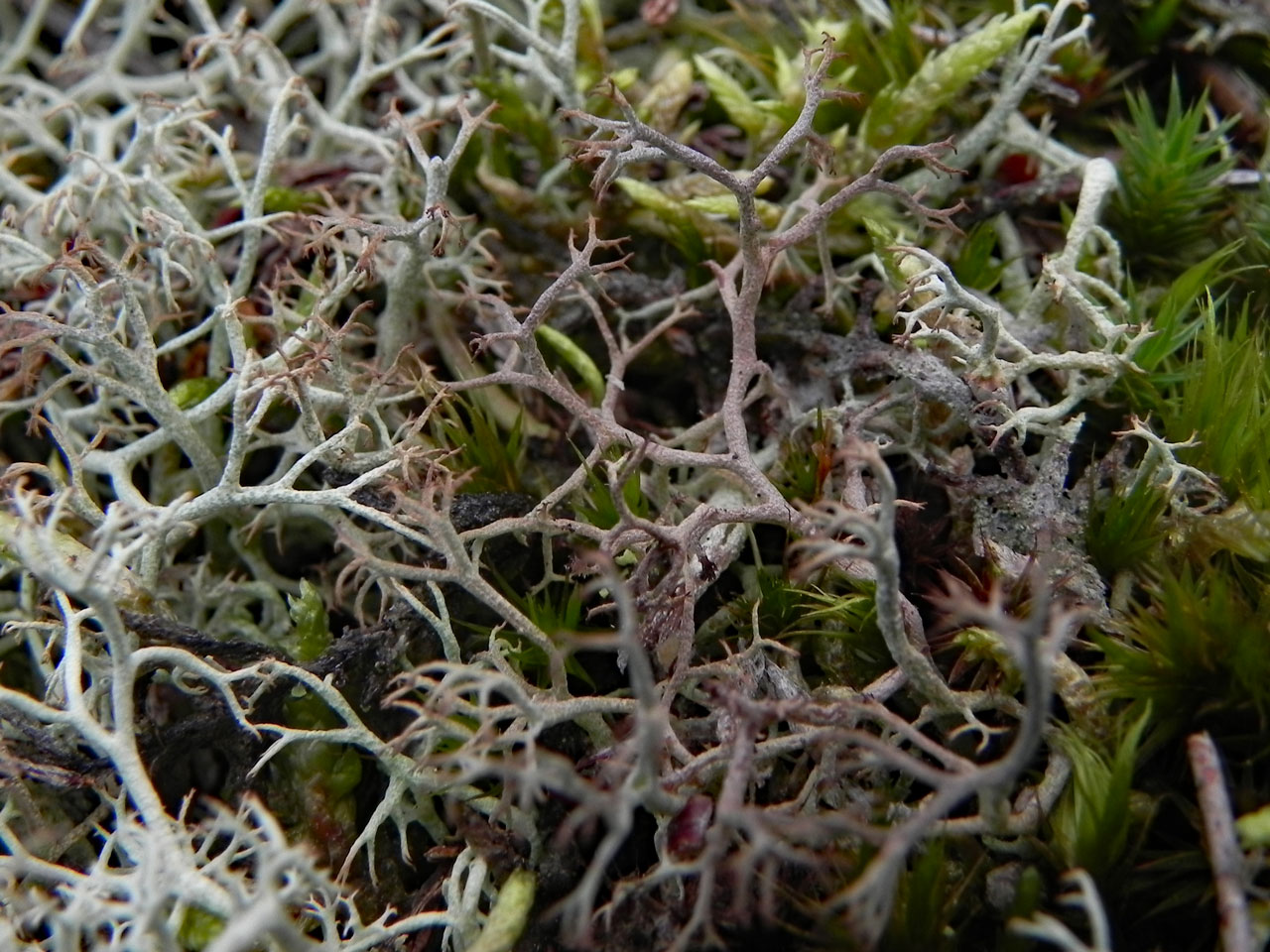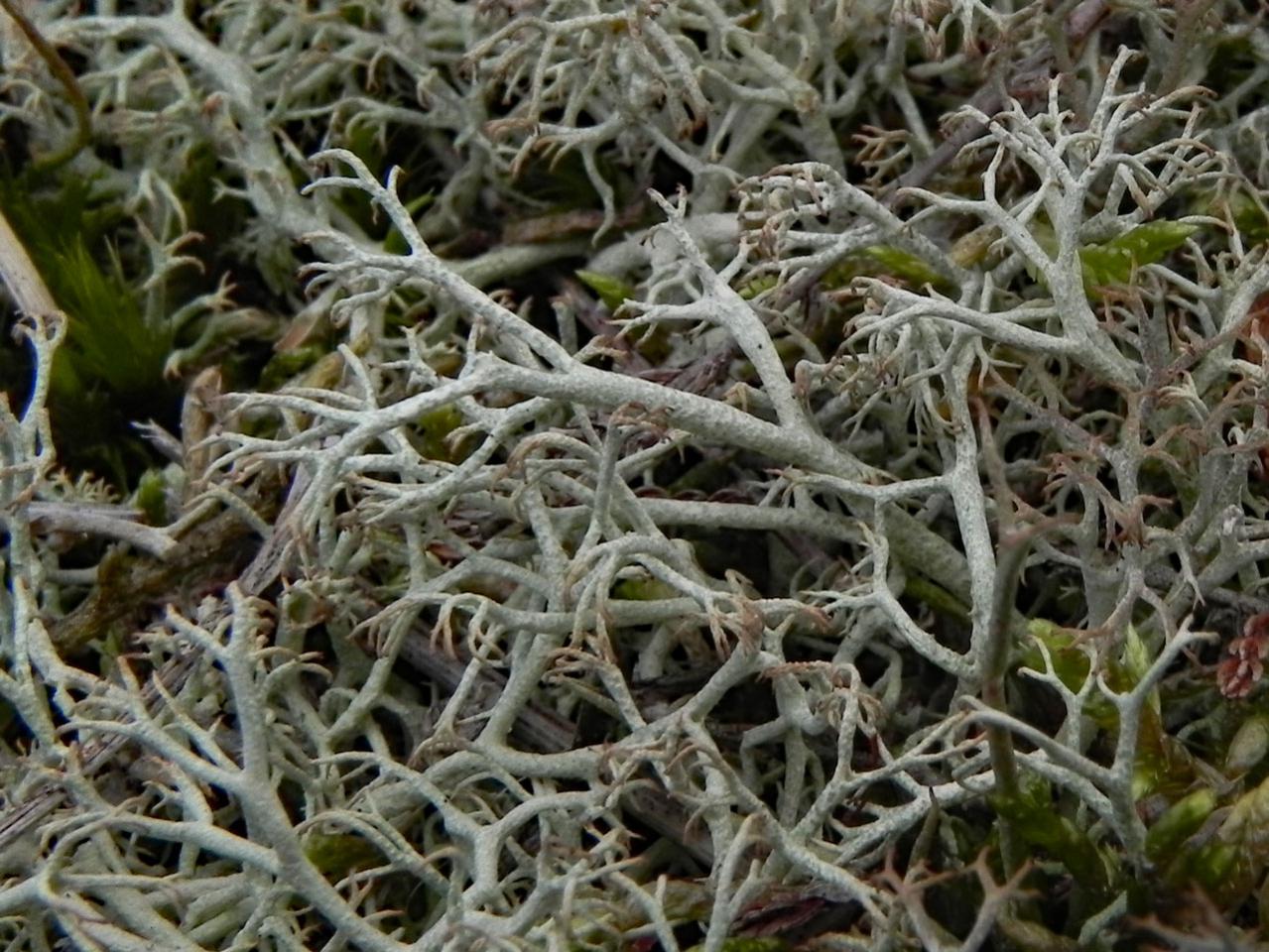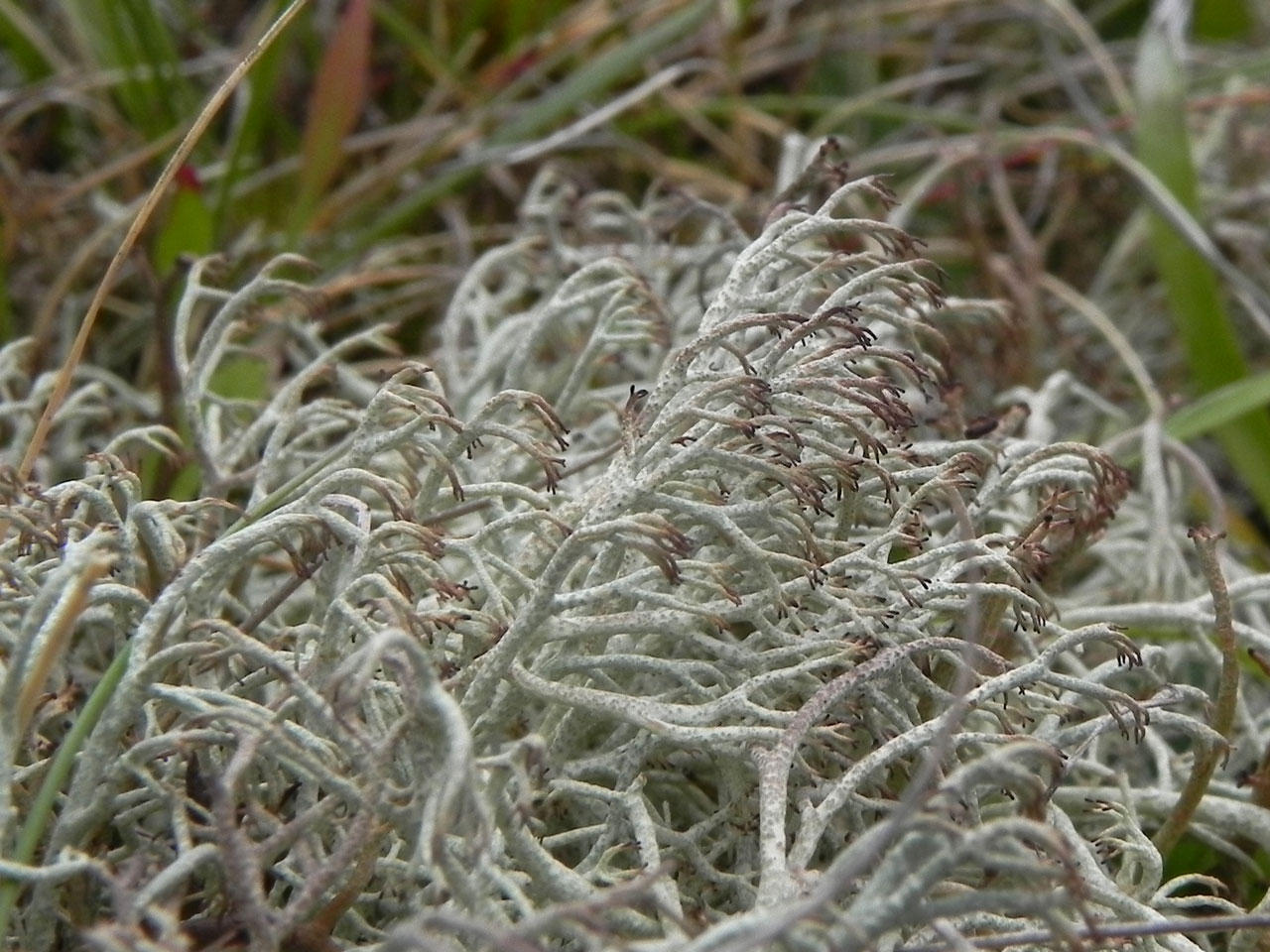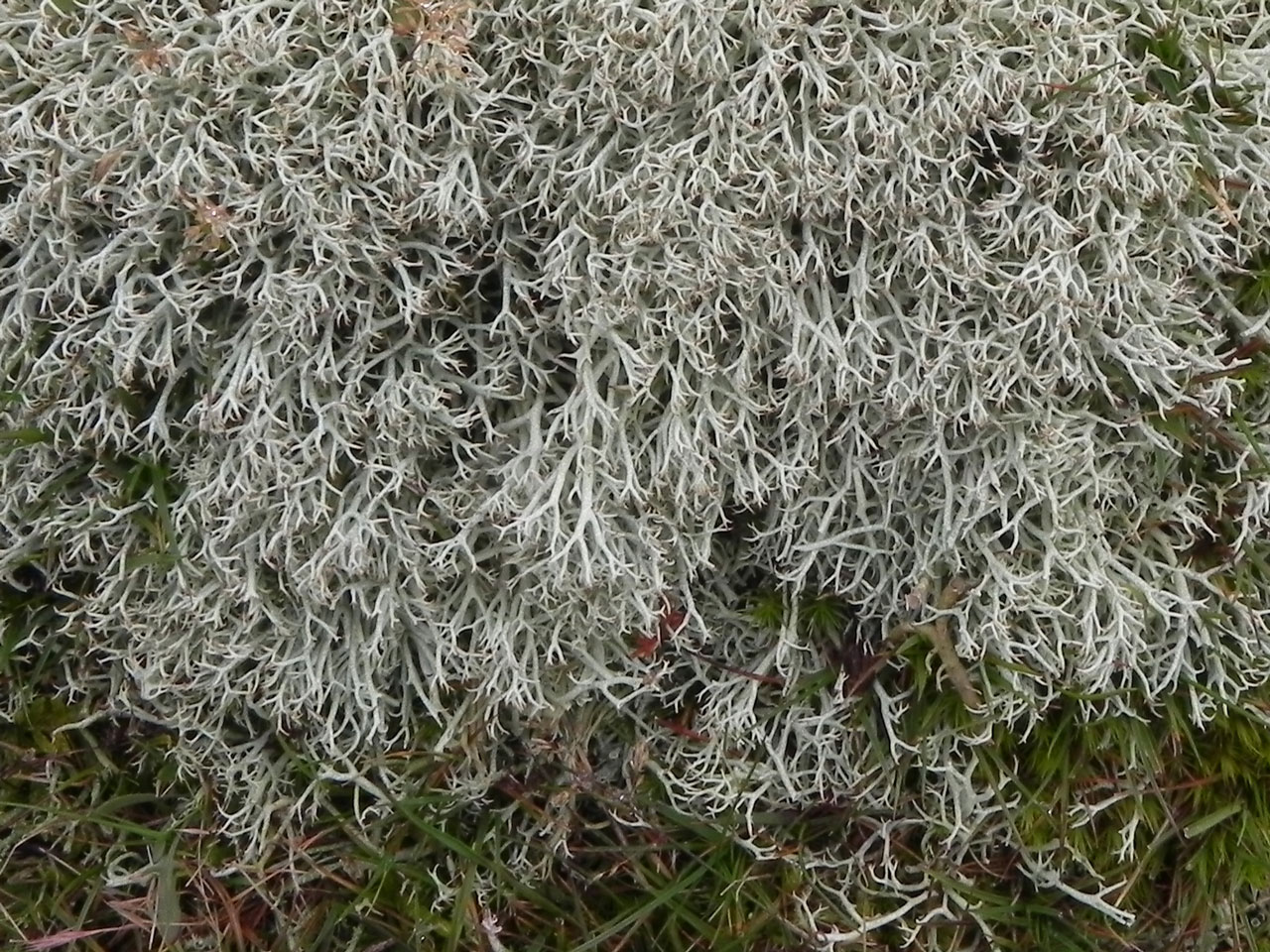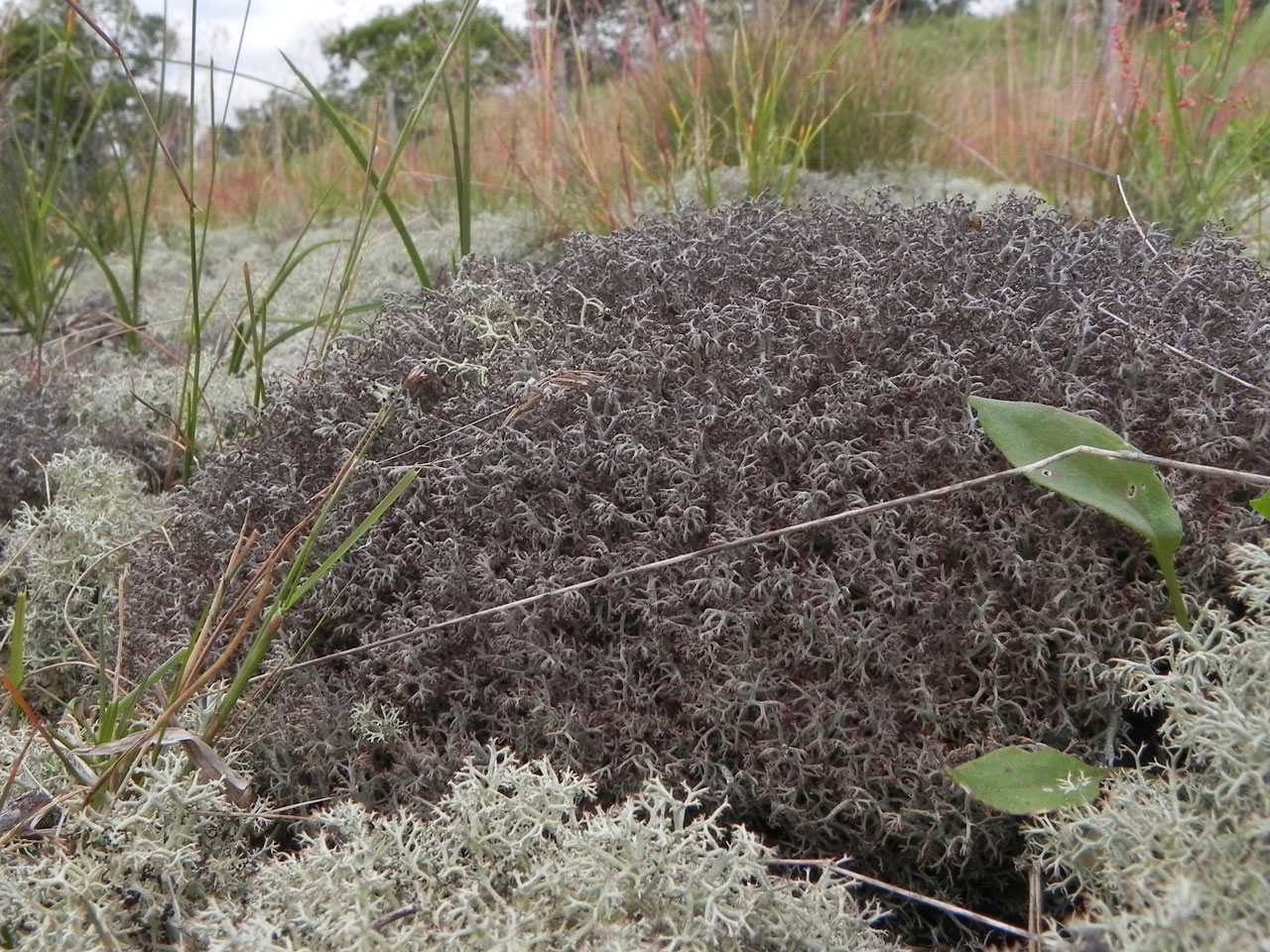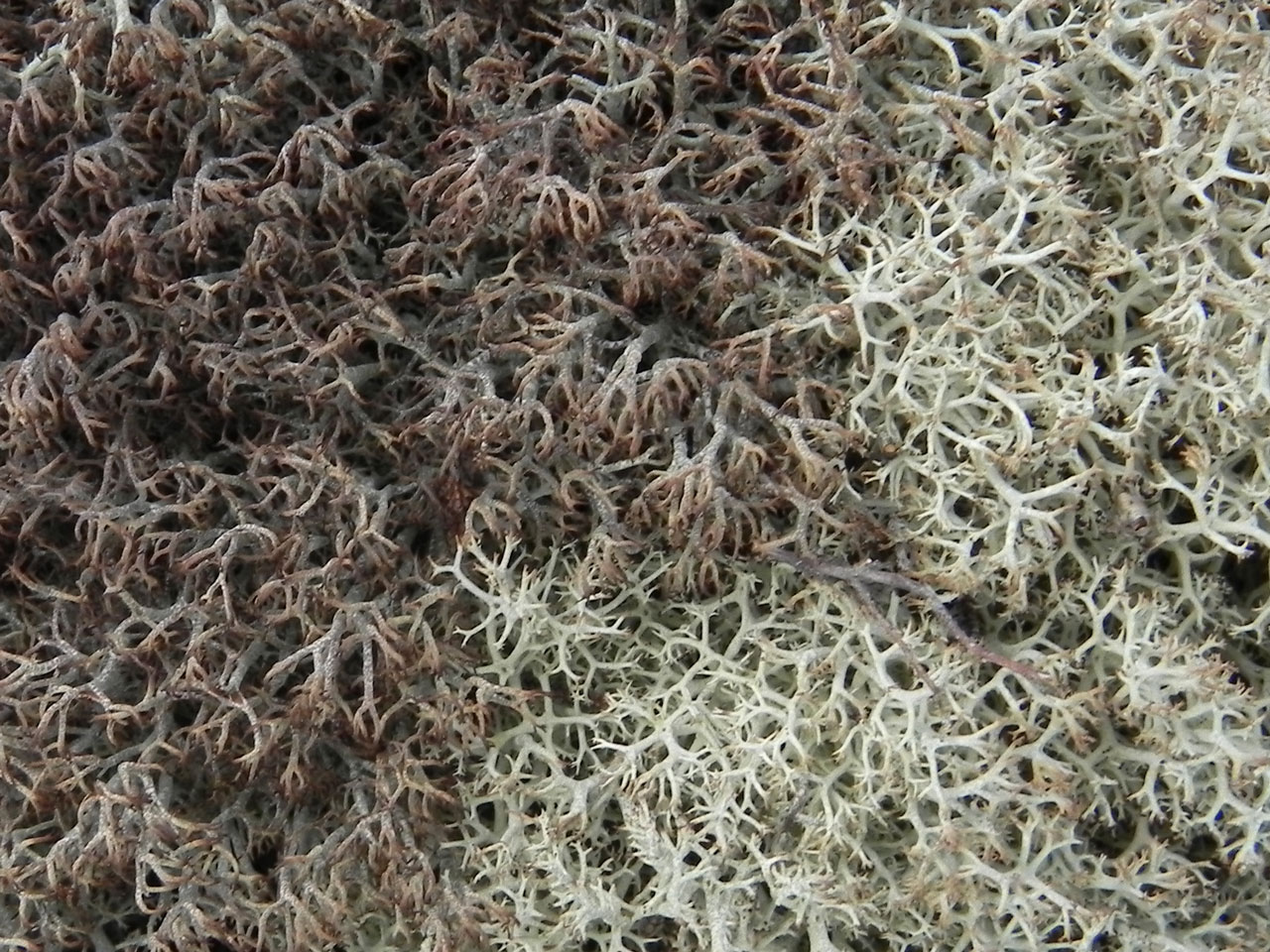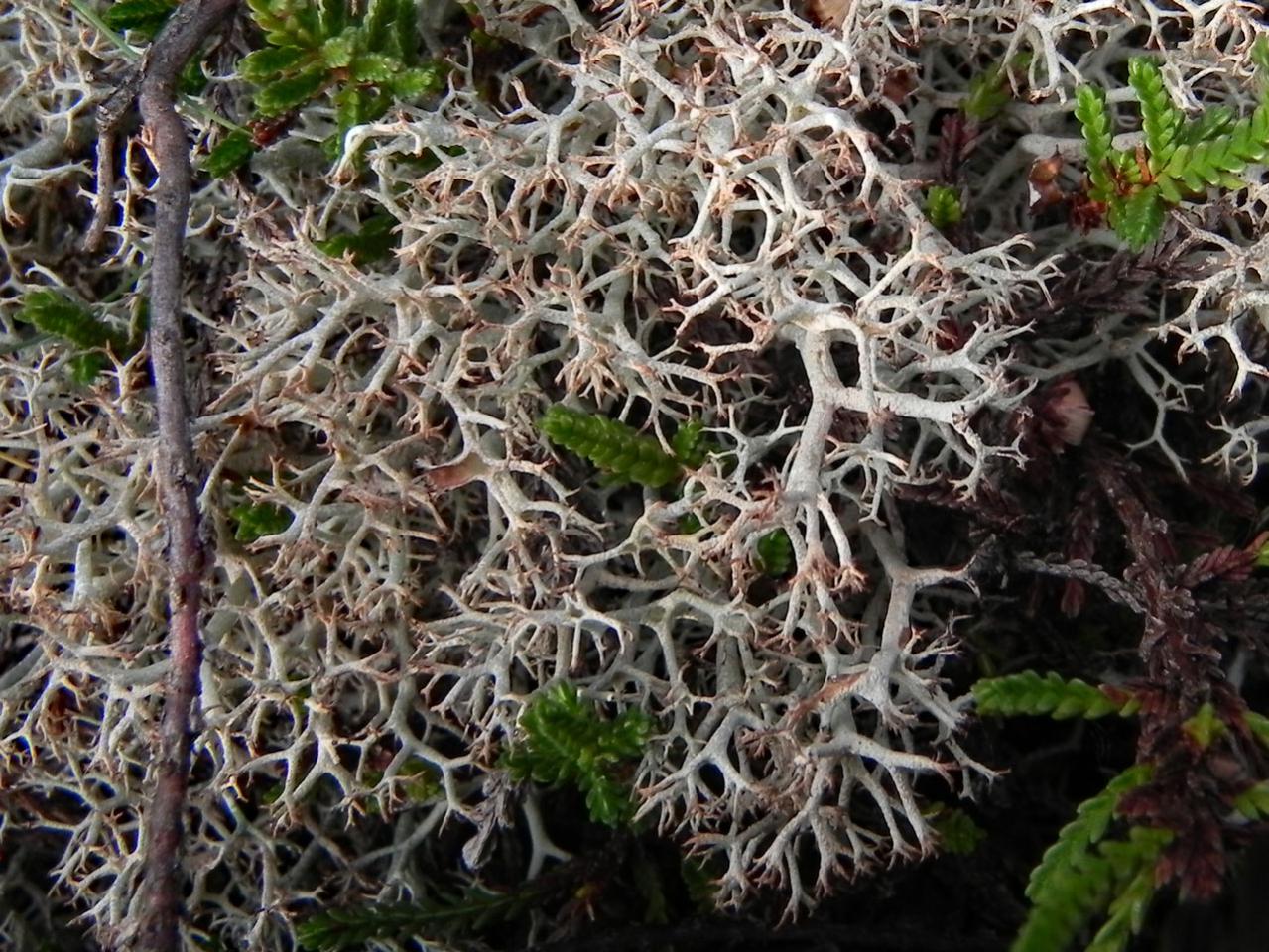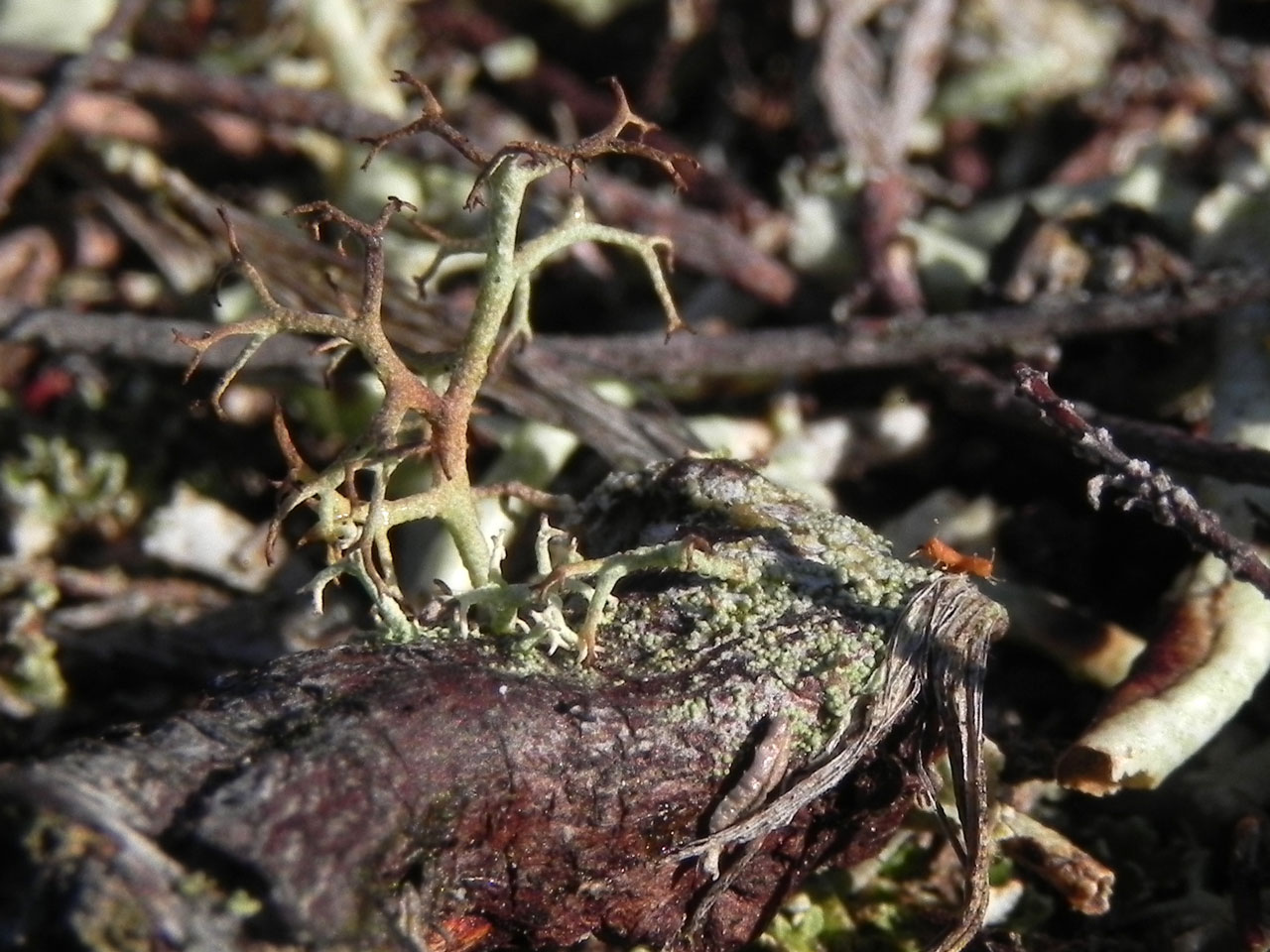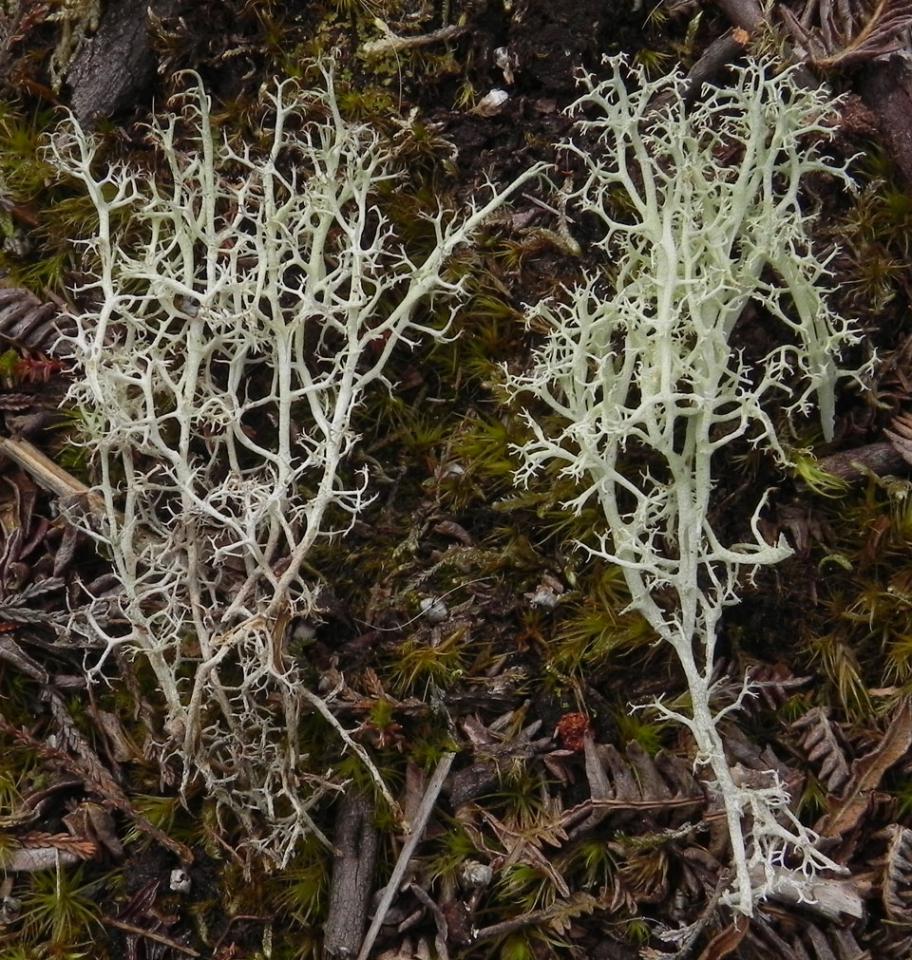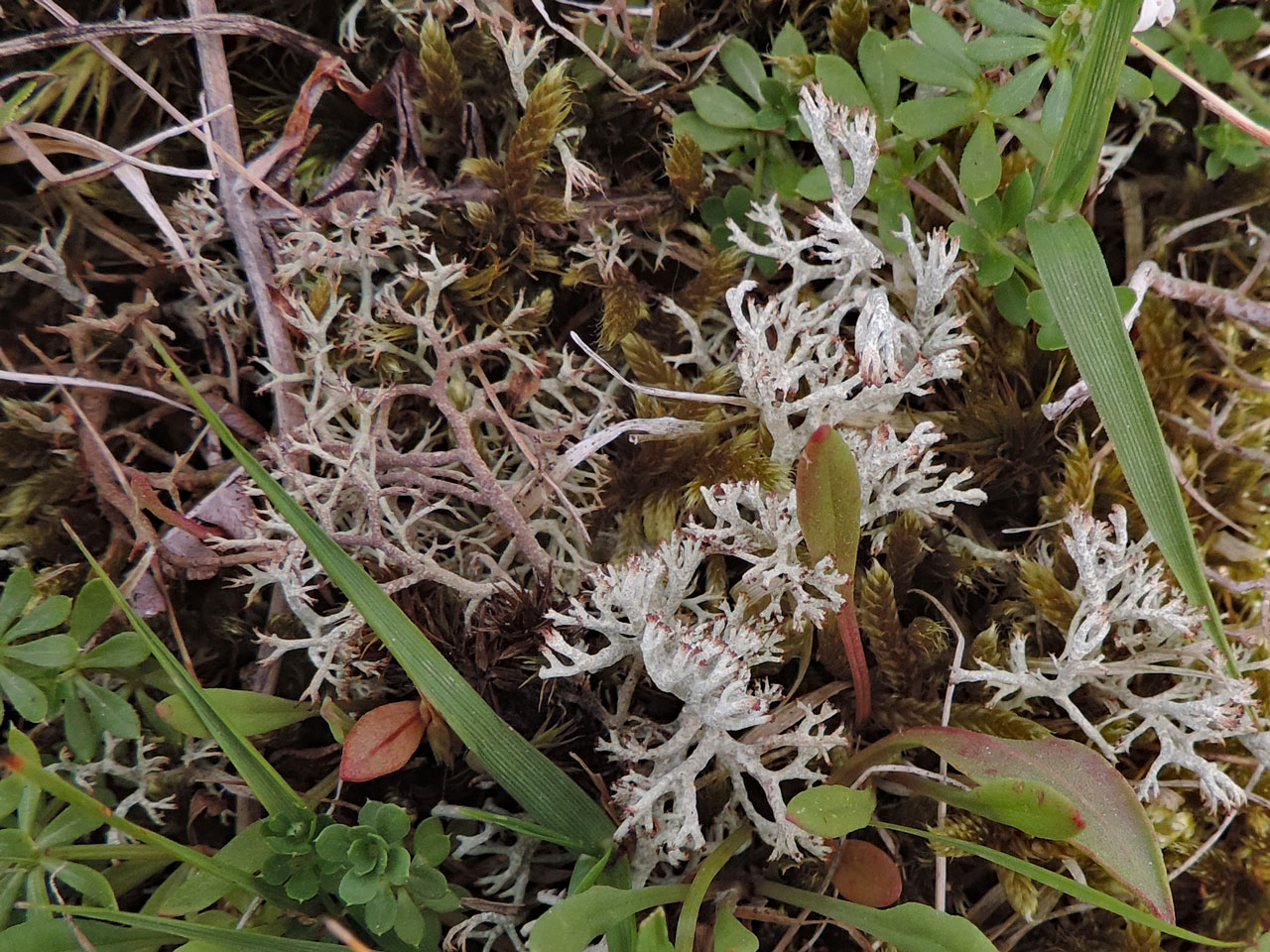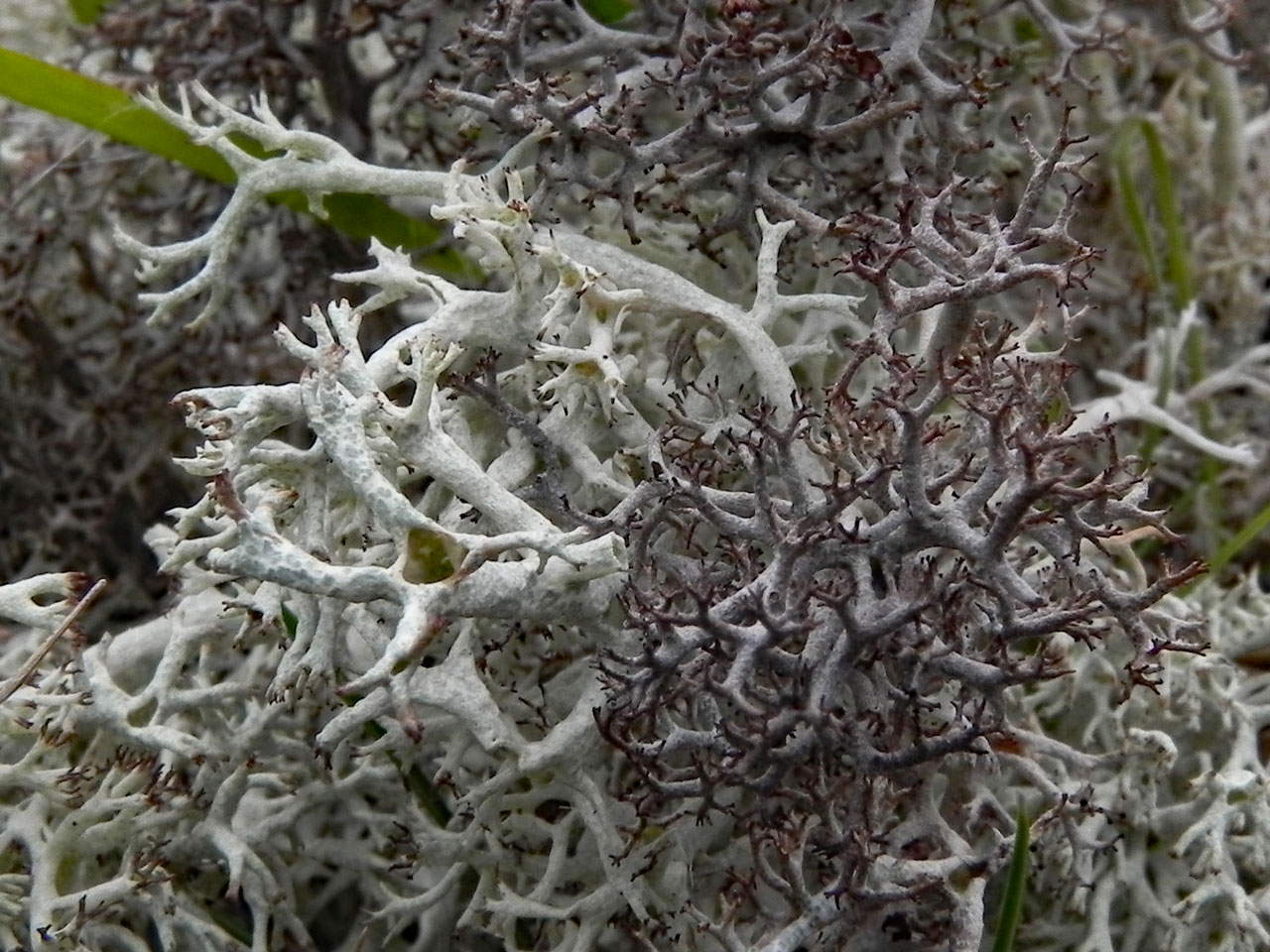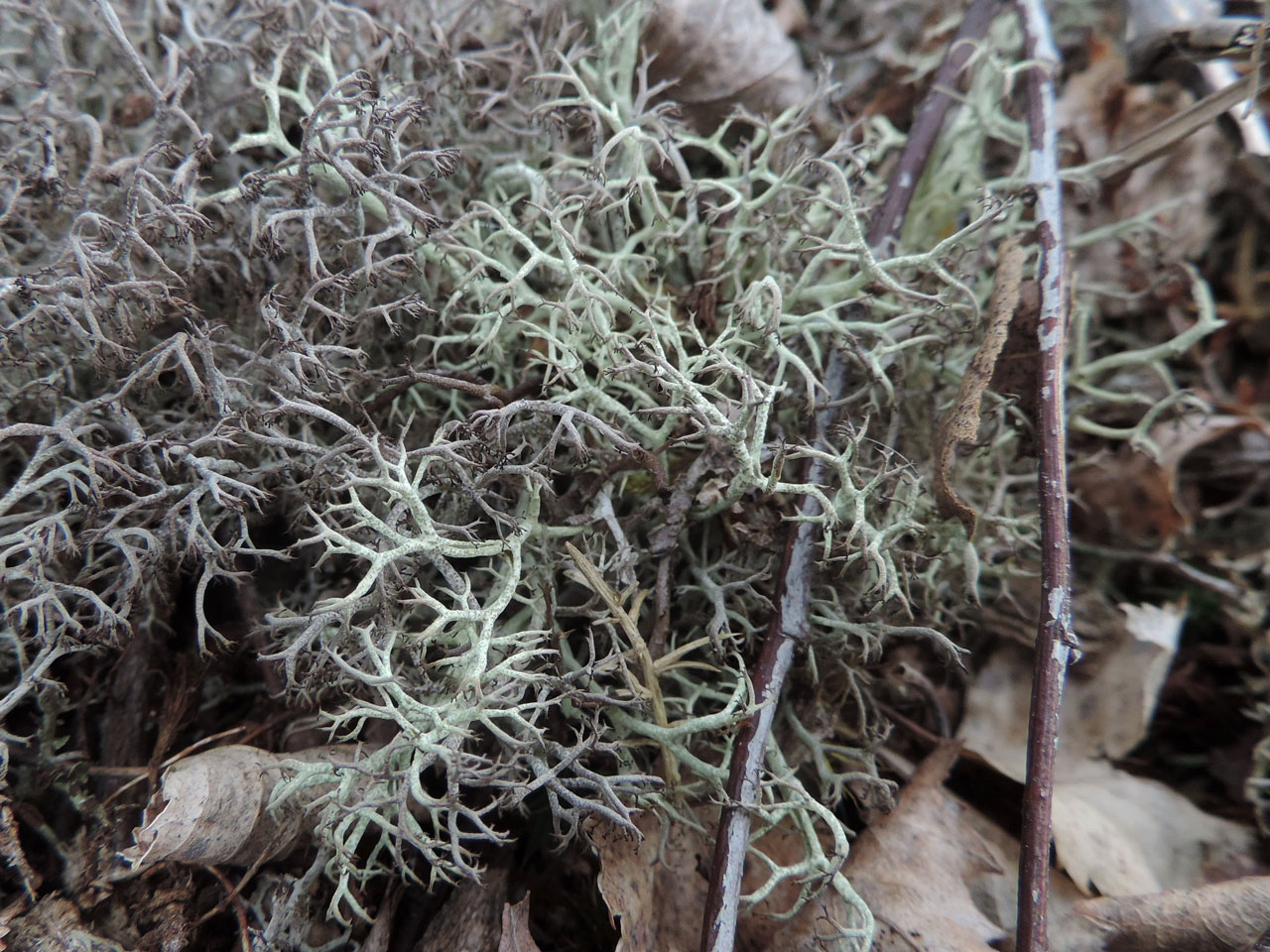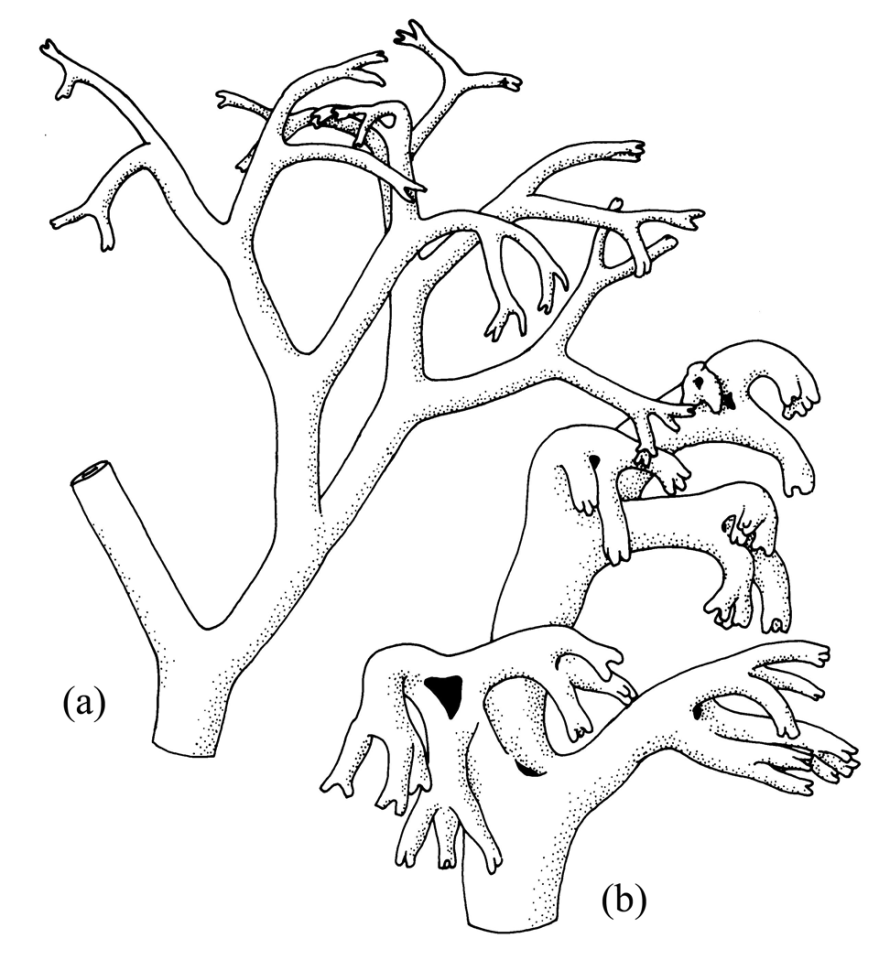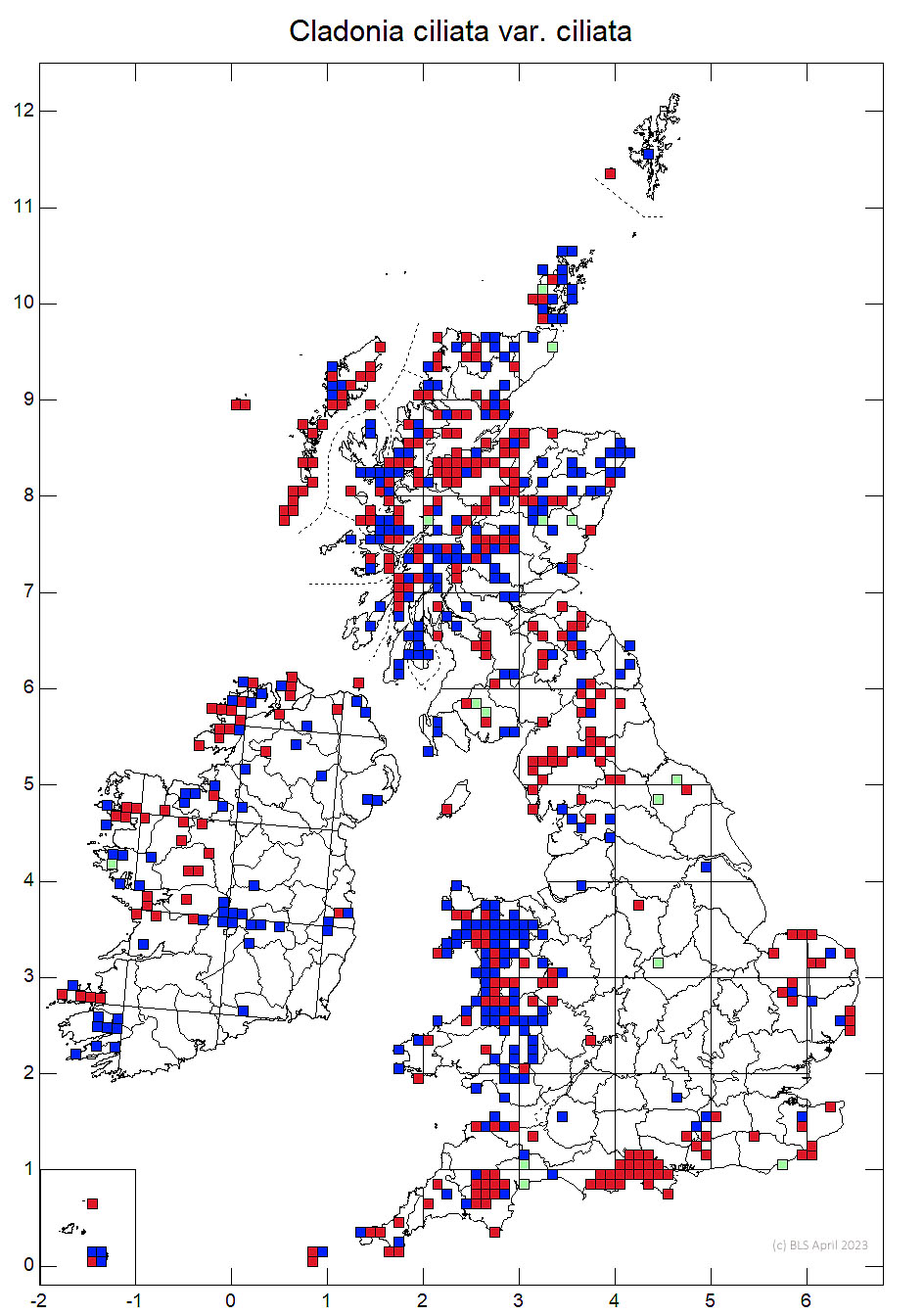Cladonia ciliata var. ciliata
This is the most gracile of the Reindeermoss species, with the fine elegant podetia branching mainly in twos, quite distinct for the more robust Cladonia arbuscula. It is separated from Cladonia portentosa by the lack of UV fluorescence from the podetia. There are two chemotypes, a brown to grey-white morph without usnic acid and greenish grey to yellowish morph with usnic acid (see Cladonia ciliata var. tenuis), are both widespread, but with the latter the more frequent. The lichen is frequent, but local, in heaths and acid grasslands, in woodland, especially rocky western woods, and acid dunes, usually in high quality habitats. It is rare in the less acidic areas of the lowlands.
Primary thallus crustose, evanescent. Podetia 3-6 cm tall, brown to grey-white, lacking green coloration (lacking usnic acid, (Cladonia ciliata var. ciliata), or greenish grey to yellowish due to the presence of usnic acid (Cladonia ciliata var. tenuis), upper part often suffused with a distinct purple-brown colour towards the tips, richly-branched; terminal branches ± downturned, distinctly orientated in one direction, the branching predominantly dichotomous at the apices, axils rarely perforated; young tips slender, to 0.8 mm diam. Apothecia brown, inconspicuous, rather rare. Pycnidial jelly red. Thallus C–, K–, KC–, Pd+ red, UV– (fumarprotocetraric and ± usnic acids).
Cladonia ciliata belongs to the Crustaceae clade, along with C. rangiferina and C. stygia. It differs from C. rangiferina in the predominantly dichotomous terminal branching, much more delicate habit, smooth not cottony-arachnoid surface, red pycnidial jelly and chemistry.
Large, coarse specimens containing usnic acid with terminal branches not strongly orientated may resemble Cladonia portentosa which is, however, KC+ yellow, Pd–, UV+ bright white; C. arbuscula is always coarser with a strongly emphasised orientation of the terminal branchlets and has tri- and tetrachotomous branching.
Collections containing usnic acid (and then with greenish grey to yellowish thalli) have frequently been separated at form or varietal level; see Cladonia ciliata var. tenuis.
On montane and lowland heathlands, in heaths and acid grasslands, in woodland, especially rocky western woods, and acid dunes, usually in high quality habitats. Moderately fire tolerant, regenerating after controlled fires in drier heaths, but usually more abundant in short unburnable vegetation, burned wet heaths and fire refuges (Sanderson, 2017). Less tolerant of taller vegetation than Cladonia portentosa and lost when management intensity declines in heaths and grasslands. Cladonia ciliata var. ciliata tends to be more frequent in less productive strongly acid habitats and Cladonia ciliata var. tenuis dominates in more productive less acid habitats such as dunes.

Widespread but local in areas of Britain and Ireland with acid soils, rare in productive lowland regions, with Cladonia ciliata var. tenuis more widespread than Cladonia ciliata var. ciliata.
Pino-Bodas, R., Sanderson, N., Cannon, P., Aptroot, A., Coppins, B., Orange, A. & Simkin, J. (2021). Lecanorales: Cladoniaceae, including the genera Cladonia, Pilophorus and Pycnothelia. Revisions of British and Irish Lichens 19: 1-45. Link
Sanderson, N. A. (2017) The New Forest Heathland Lichen Survey 2011 – 2015. A report by Botanical Survey & Assessment to Natural England, Forest Enterprise & The National Trust. Link
Text by Neil A Sanderson based on Pino-Bodas et al (2021)
